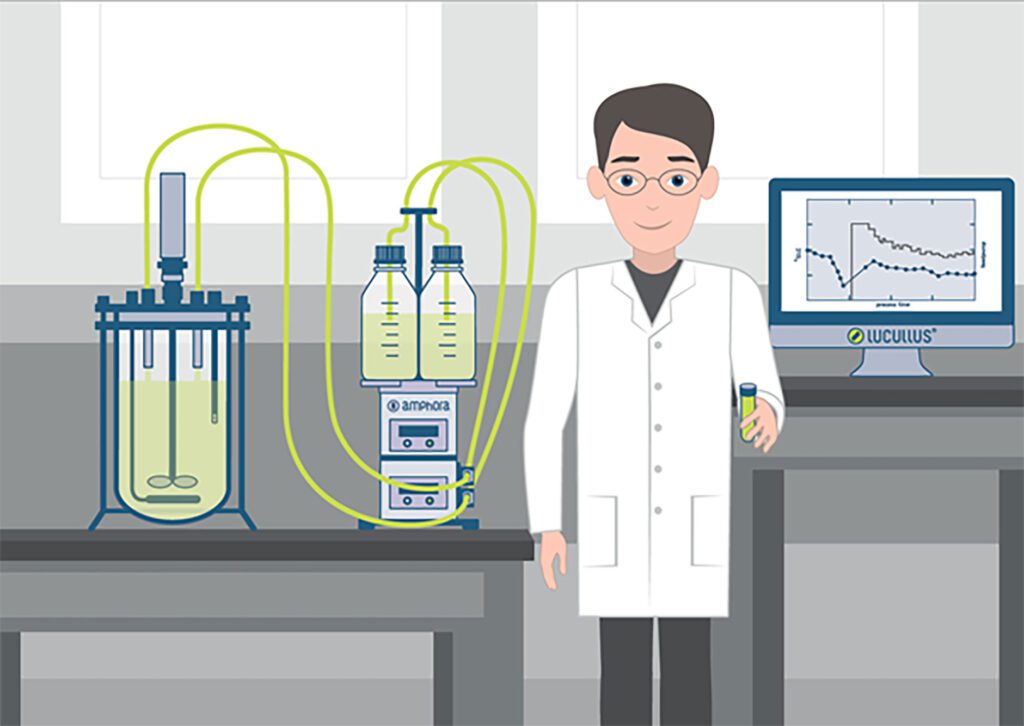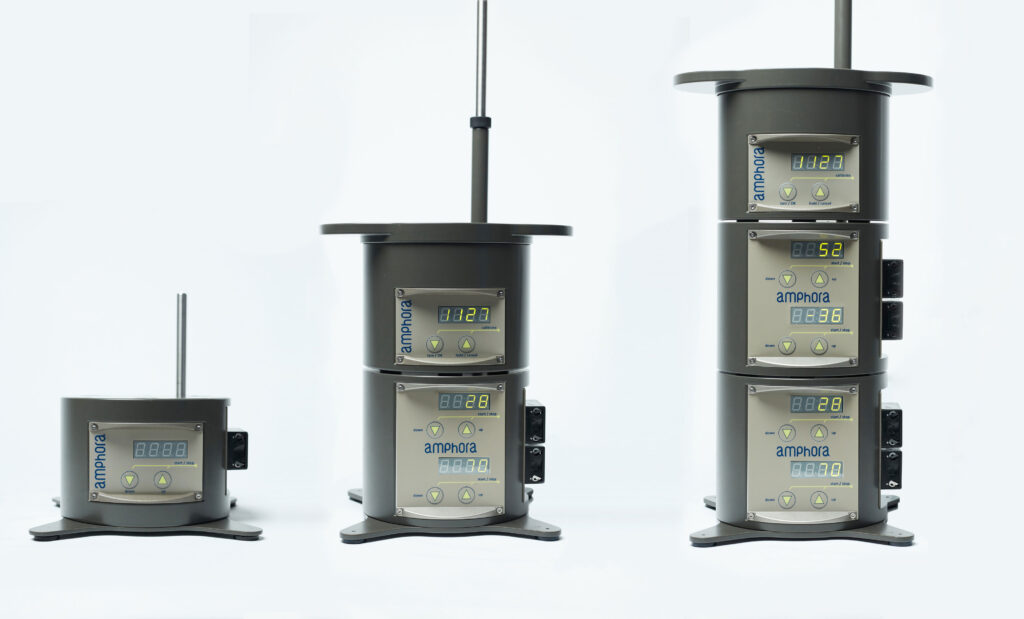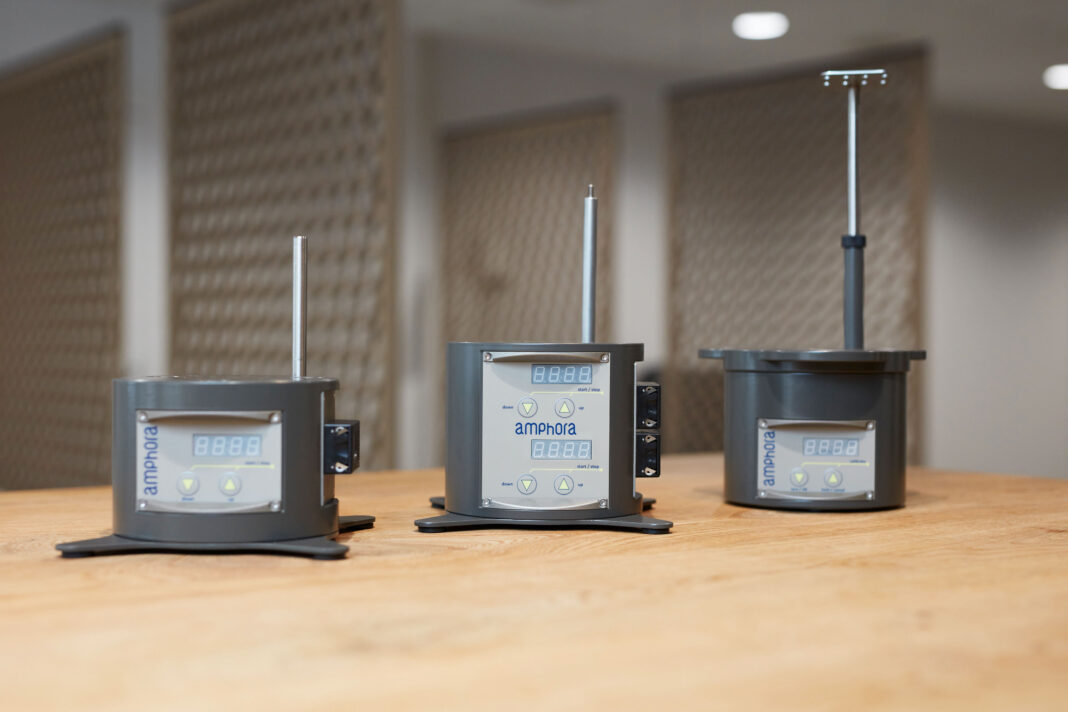Sponsored content brought to you by

Designing of feed strategies is at the core of successful bioprocess development
Fed-batch processes are a current preference for the production of recombinant proteins in mammalian cells. The use of nutrient feeding prevents the depletion of important medium components such as substrate and results in improved culture longevity and high cell and product yields.1 Feeding is also crucial in the development of continuous bioprocesses.2 However, requirements for process control in continuous processes are typically significantly higher3 than in batch/fed-batch operation. The fact that continuous biotech manufacturing has the potential to achieve greater product quality at lower cost and shorter time to market4 shows that this topic is of high importance.
Many bioprocess feed strategies are either fixed to a predetermined time series of setpoints or adjusted manually throughout the process in response to laborious offline measurements of residual substrate. However, neither fixed feed regimes nor intermittent adjustments can deliver feed optimally due to the kinetic nature of feed requirements over the course of a fermentation. The consequence of overfeeding or underfeeding, even by a small
magnitude, is starvation or overflow metabolism, respectively, and both can result in subpar performance.5
In contrast, a dynamic fed-batch process is one where substrate feeds are delivered in response to physiological signals received from the culture in response to local substrate availability. When variables that impact substrate demand are modified during bioprocess development, dynamic feed strategies can help ensure that substrates are delivered in an optimal manner. While dynamic feed strategies can be extremely valuable in facilitating successful bioprocess development and strain screening, they must be developed and optimized with the individual organism’s metabolism in mind.5
Implementation of dynamic feed strategies made simple
There are some hurdles in the technical implementation of dynamic feed strategies. On the one hand, typically additional scales and pumps from different vendors must be integrated into existing control systems. On the other hand, many control and SCADA systems are not capable of implementing dynamic control. And, last but not least, frequent measurements of the relevant medium components are often not available online.

With the automated sampling system Numera® and the process information management system Lucullus®, Securecell offers already proven process changers for biopharma drug development. With these two tools, typical operations in bioprocess development are optimized by automating workflows and harmonizing the layer above the individual devices. Amphora now complements these two solutions, allowing the implementation of dynamic feeding in combination with the existing technology in a simple way.
Lucullus®—real-time data capturing and process control
At its core, Lucullus® allows real-time data capturing and process control interaction with various devices. In addition to the standard unit operations, peripheral devices like sensors can be flexibly added to the software level.
One of the major benefits of Lucullus® is the alignment of online signals and at-line sample-based signals in a timely manner, giving users a central monitoring and control interface for all crucial process parameters. Lucullus® offers sample management, nicely integrated into the process monitoring and control interface, and gives the user a great tool to oversee and use all measurement data within a central interface optimized for the execution of parallel experiments.

Besides remembering material inputs to generate complete data sets and support traceability, Lucullus® offers tools to link processes with each other. It captures the seed train and provides a media management tool. The media management tool allows the digitalization of media kitchen operations with electronic recipes for lot creation, while at the same time ensuring full traceability from the raw material to the final process outcome by linking the media, feeds, and buffers to the respective processes.
All process information is remotely accessible to analyze data, create predefined reports, or extract complete bioprocess data sets. Of course, Lucullus® also provides interfaces to integrate with other specialized tools.
Numera® PAT—low-volume automated sampling and sample processing
Numera® automates sample flow from vessel to analyzer and harbors modules for sample dilution and filtration. Samples are stored on a refrigerated sample collector or directly transferred to analytical systems such as HPLC (high performance liquid chromatography) instruments, metabolic analyzers, or cell counters. While other sampling technologies lack proper integration with the surrounding environment in terms of data management, Numera® fully relies on the Lucullus® interface and its integration capabilities. This allows a completely seamless and automated experience around sample planning, processing, and data alignment.
Together with Lucullus®, Numera® allows the loop around sample analytics and process feedback (control) to be closed in an out-of-the-box fashion.
Amphora—bench-space-saving scales and pumps for seamless integration with Lucullus®
The Amphora product range includes scales and pumps that can be installed in a space-saving manner and seamlessly integrated into the Lucullus® environment. Amphora Station consists of an Amphora Scale and one or two Amphora Pumps.
The Amphora Scale operates in a range of 0 to 3,000 g with a resolution of 0.1 g. It comes with weighing plates for 1 x 2,000 mL lab bottle, for 2 x 1,000 mL lab bottles, 3 x 500 mL lab bottles or 4 x 250 mL lab bottles. A strain relief ensures optimum retention of the tubes and thus trouble-free weighing.
The Amphora Pump is available with one or two pump heads. It works with Santoprene® tubes with a wall thickness is 0.85 mm. Flowrates between 10 and 100 g/h (240 and 2,400 g/day) can be reached.
One of the outstanding features is the space-saving installation, as bench space is a rare commodity in most development labs. Both the Amphora Scale and the Amphora Pump have only 14 cm in diameter! In addition, the devices can be stacked; that is, the scale can be placed on up to two pumps. The devices are designed in such a way that the vibrations are suppressed, and the weighing signal is not disturbed.

The Amphora Station is ideal for equipping existing installations with additional scales and pumps. In particular, it is possible to realize up to four gravimetrically controlled feeds with only one scale (multi-feed).
All devices of the Amphora product range can be directly integrated into Lucullus®, providing full functionality for setting up feed profiles out of the box. In combination with the Numera® sampling system, dynamic feedback control loops are also easy to implement.
The Amphora Station is a core component in the recently introduced fully automated solution for bioprocess development and small-scale production IntegraOne (see GEN article “Securecell Introducing IntegraOne”).
To make the entry into the Lucullus® world easy, Securecell delivers the Amphora Station with a NUC (Next Unit of Computing) with a preinstalled Lucullus® environment and the required network switch and cables.
References
- Feed optimization in fed-batch culture; Ana Rita Costa, Maria Elisa Rodrigues, Mariana Henriques, Rosário Oliveira, Joana Azeredo; Methods Mol Biol. 2014;1104:105-16. doi: 10.1007/978-1-62703-733-4_8.
- Process Control and Monitoring for Continuous Production of Biopharmaceuticals; Dr. Margit Holzer; American pharmaceutical review; March 25, 2018.
- Long-Term Reliability of an Aseptic On-line Glucose Monitoring & Control System for Perfusion CHO Cell Culture; Konstantin B. Konstantinov, and W. Miller; BioProcess International; December 2017
- Continuous Manufacturing in Biotech Processes – Challenges for Implementation; Robert Dream, PE, CPIP Christoph Herwig, PhD Emilie Pelletier; Pharmaceutical Engineering; November / December 2018
- Leveraging dynamic feed strategies to accelerate bioprocess timelines; www.culturebiosciences.com; May 28, 2021
Contact us to sign up for the Amphora product launch and to get more information about our products [email protected]

